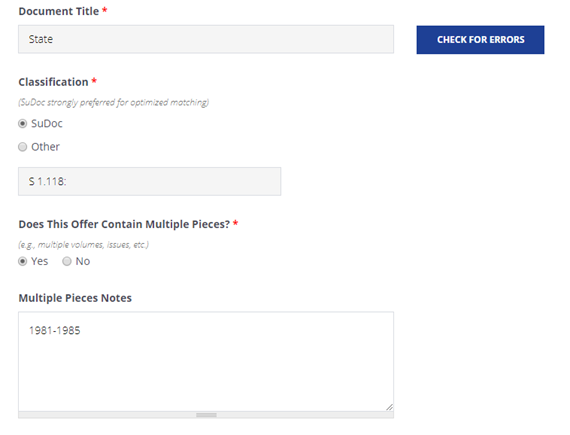Matching for Ranges
Entering offers (or needs) as a range can reduce the amount of data entry required to post to FDLP eXchange. However, there are some nuances in the matching to keep in mind. In general, you will be less able to rely on the automated matching when entering ranges. When entering a range, you should enter as much of the SuDoc classification as possible to apply to the range offered or needed. In most cases, that will be the stem. For example, you could offer the 1981-1985 issues of a title as shown below.

If a library was seeking issue 272 from 1984 and had entered a need as a single issue, they would have entered the SuDoc number as “S 1.118:272.” Even though this falls within the range of issues you are offering, the system would not match the other library’s offer to your need. This is because the match looks for an exact match of the full SuDoc number as entered, and “S 1.118:” does not exactly match “S 1.118:272.” In this case, relying on the matching function to catch the match would mean that neither library would be aware that material needed by one library was being offered by another. Either the library needing the issue would need to find the offer in the Repository, or the offering library would have to find the need in the Repository in order to make the connection to transfer the material.
Conversely, if another library also posted a need for this title, but needed 1995-2000, they would also use only the stem in the Classification field in their need. Although your offer is for a different date range, you would get a match in that case, because both the offer of the 1981-1984 issues and the need of the 1995-2000 issues would have exactly the same SuDoc number (S 1.118:) in the Classification field.
Please contact us via askGPO if you have questions or need further assistance.

